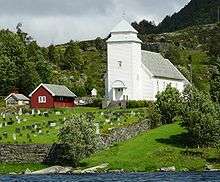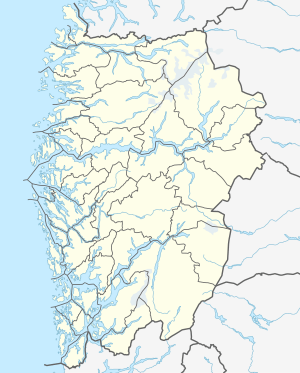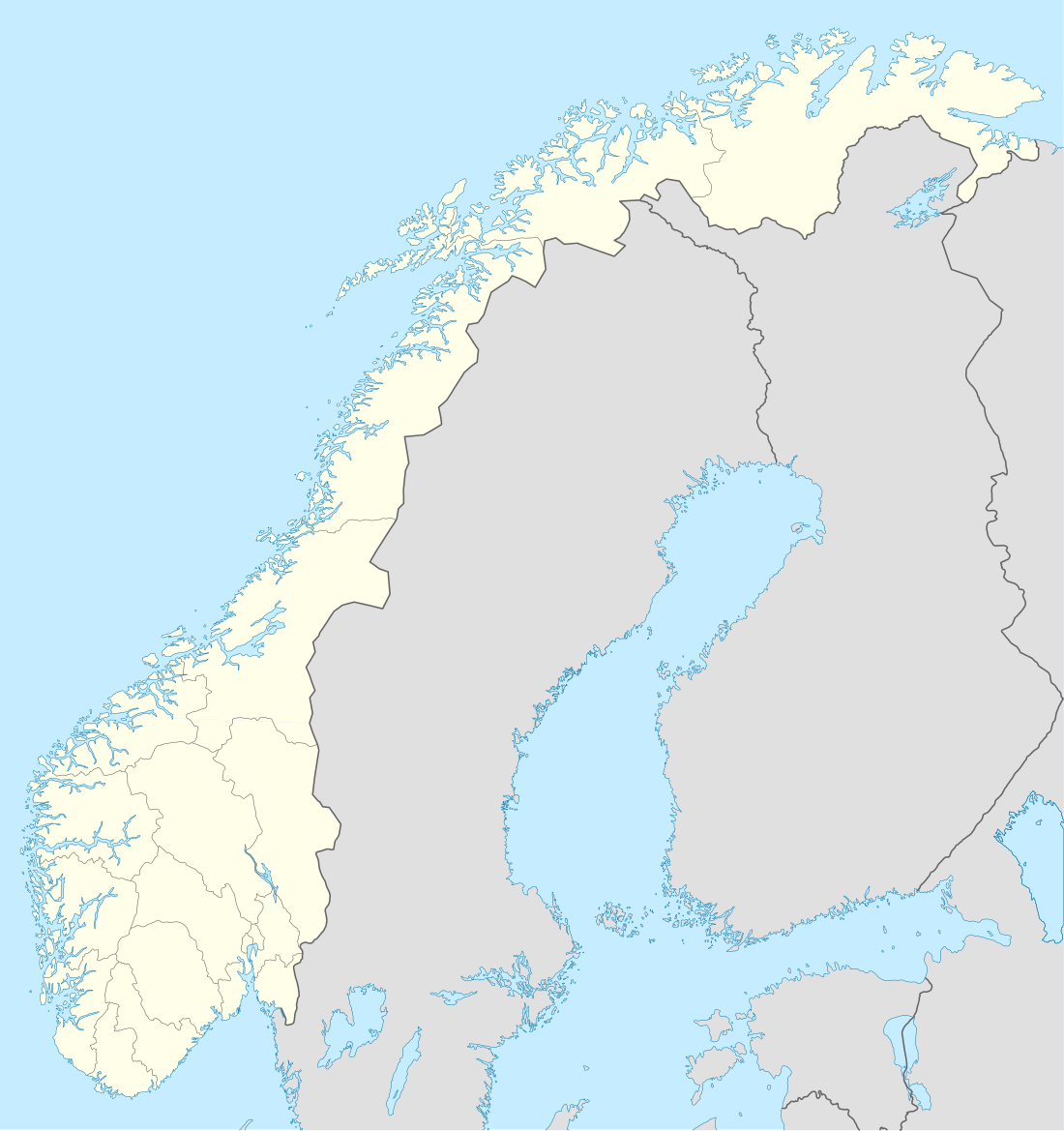Rugsund Church
Rugsund Church (Norwegian: Rugsund kyrkje) is a parish church of the Church of Norway in Bremanger Municipality in Vestland county, Norway. It is located in the village of Rugsund, on the southern coast of the Nordfjorden. It is the church for the Rugsund parish which is part of the Nordfjord prosti (deanery) in the Diocese of Bjørgvin. The white, wooden church was built in a long church style in 1838 using plans by the architect Hans Linstow. The church seats about 400 people.[1][2]
| Rugsund Church | |
|---|---|
| Rugsund kyrkje | |
 View of the church | |
 Rugsund Church Location of the church  Rugsund Church Rugsund Church (Norway) | |
| 61.8872°N 5.3442°E | |
| Location | Bremanger Municipality, Vestland |
| Country | Norway |
| Denomination | Church of Norway |
| Churchmanship | Evangelical Lutheran |
| Website | https://kyrkja.no/bremanger |
| History | |
| Status | Parish church |
| Founded | 12th century |
| Architecture | |
| Functional status | Active |
| Architect(s) | Hans Linstow |
| Architectural type | Long church |
| Completed | 1838 |
| Specifications | |
| Capacity | 400 |
| Materials | Wood |
| Administration | |
| Parish | Rugsund |
| Deanery | Nordfjord prosti |
| Diocese | Bjørgvin |
Rugsund Church is located on the Hessevågen farm on the mainland side of the village of Rugsund. The church has a seating capacity of 400, and was consecrated on 2 September 1838. The church is a wooden "long church". It was built using plans by the architect Hans Linstow. The church building was remodeled in 1912.[3][4]
History

The earliest existing historical records of the church date back to the year 1330, but the church was likely built in the 12th century. The church was originally located on the island of Rugsundøya. The first church was a stave church that was in use until 1650 when it was torn down and replaced. The new church was a small, timber-framed long church. This church burned down in 1834. After the fire, the parish debated where to built the replacement church since for a long time been at the old church site, there was such a shallow layer of soil that it was difficult to maintain the church cemetery on Rugsundøya. The soil conditions were actually so bad that funeral parties transported masses of soil by boat to the graveyard. Because of this, it was decided to built a new graveyard and church across the small strait on the mainland in the village of Rugsund.[5]
The present church building was constructed in 1838 to replace the previous building on Rugsundøya that burned down.[3][6] The beautiful location of the previous church on the point above the harbour was a navigational landmark for ships. When the present church was to be built, people demanded a similarly beautiful location. At Rugsund, the church was centrally located with the main entrance facing the sea, and with an excellent view from the church steps across the sound to the island. The churchyard encircles the church, and furthest down to the sea, there is a stately gate that the seafarers in earlier times walked through on their way to church. This was also the place where the vicar went ashore when he came by boat from Davik.[4]
See also
References
- "Rugsund kyrkje". Kirkesøk: Kirkebyggdatabasen. Retrieved 2019-10-17.
- "Oversikt over Nåværende Kirker" (in Norwegian). KirkeKonsulenten.no. Retrieved 2019-10-17.
- "Rugsund stort kyrkjesokn i gamal tid" (in Norwegian). NRK.no. 2007. Retrieved 2008-09-28.
- Aaraas, Margrethe; Venden, Sigurd (2000). "Rugsund church" (in Norwegian). Sogn og Fjordane Arkiv. Retrieved 2008-09-27.
- "Rugsund gamle kirkested" (in Norwegian). Norwegian Directorate for Cultural Heritage. Retrieved 2019-10-17.
- "Rugsund kyrkjestad / Rugsund kyrkje 3" (in Norwegian). Norwegian Directorate for Cultural Heritage. Retrieved 2019-10-17.

